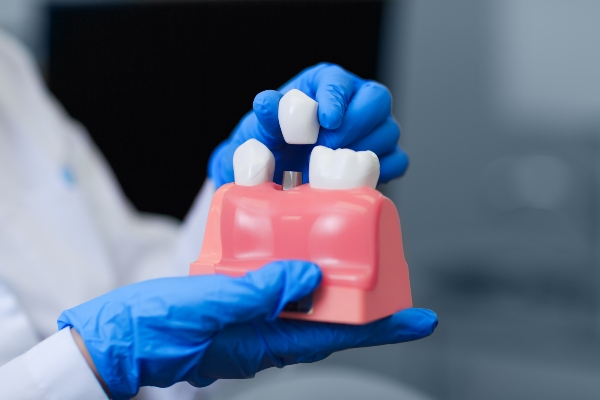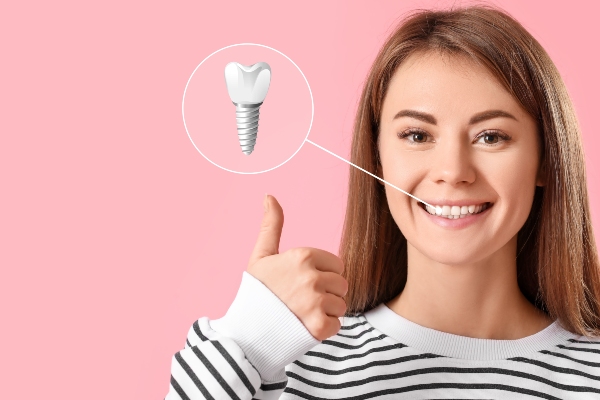How a General Dentist Can Help Clean Your Gums

While going to a general dentist may not be at the top of anyone’s favorite things to do, having a professional cleaning can treat and help prevent periodontal disease. Individuals who have problems with their gums are more at risk for infections, which can lead to tooth loss. Deep cleaning can reduce and remove tartar and inflammation so that gums can heal.
Periodontal disease can affect teeth
Caused by bacteria that naturally occur in the mouth, gum disease is the result of too much bacteria building up. The result of the overpopulation of bacteria is an abundance of waste, which becomes dental plaque, a sticky white substance. If not removed quickly, it hardens into tartar, a hard, mineralized yellow matter. As the material builds up, it can collect in the area between the teeth and the gums, causing the tissue to become tender, swollen and red. Removing this residue is the best way to prevent gum disease.
When deep cleaning is needed
A visit to a dentist or dental hygienist every six months can keep gums and teeth healthy. A deep cleaning goes beyond regular brushing and flossing by clearing bacteria, plaque and tartar from the pockets of tissue between the teeth. Also called scaling and root planing, the dental professional uses special tools to clean along and below the gum line. When the gums recede, there may be rough areas on the roots. These surfaces can be smoothed, reducing the space where bacteria can gather and thrive.
Depending on the amount of deep cleaning needed, the dentist may administer a local anesthetic during the procedure. If buildup is significant, it may be necessary to schedule several appointments. During each visit, a different part of the mouth will be treated. This lets the mouth heal before the next is cleaned.
Why get deep cleaning from a general dentist
When gum disease reaches an advanced stage, surgery may be required. Deep cleaning is much less invasive and can prevent periodontal issues from reaching that level of severity. A hygienist uses a probe to measure the area around the teeth. If the tissue between the teeth and gums is more than five millimeters wide, it is considered a pocket and is evaluated to determine if a deep cleaning is needed.
After the procedure, an antibiotic and pain reliever may be prescribed to reduce discomfort. Follow-up appointments may be scheduled to ensure gums are healing well and that the bacteria is removed. Gums should be noticeably healthier after a few weeks.
Conclusion
Gum disease is not always painful. Common symptoms include loose teeth, bad breath, pus around the teeth and gums and gums that bleed easily. A general dentist can identify whether the periodontal pockets contain much bacteria and are putting the bone structure and teeth at risk. Having regularly scheduled dental appointments is the easiest way to maintain normal bacteria levels and to keep an eye on gum health. Individuals with chronic gum disease may be recommended to have deep cleaning as part of a regular oral health regimen.
Request an appointment here: https://metrosmiles.com or call Metro Smiles Dental at (718) 841-9591 for an appointment in our Forest Hills office.
Check out what others are saying about our services on Yelp: Read our Yelp reviews.
Recent Posts
Most people want to have dental implants right after dental extraction. Replacing the lost tooth is a priority. This can prevent more complications as the mouth heals. Understanding the process of getting implants after dental extraction can help prepare you for your appointment. Here are the details about getting dental implants after a dentist removes…
Peri-implantitis is a painful condition that affects the dental implant site. If left untreated, the consequences are irreversible, so it is important to maintain a checkup schedule with an implant dentist. However, an implant dentist can save your implants, gum tissue, and jawbone without much hassle if caught in its early stages. This article will…
Getting dental implants as a replacement for removable dentures can be a rewarding move. These restorations are stable and lasting. You can smile, laugh, eat, and speak without worrying that they will slip out of your mouth. Here are the benefits of getting dental implants over removable dentures.Dental implants are effective in restoring teeth. Unlike…
People with tooth loss can smile with confidence again, thanks to the help of an implant dentist. Tooth loss can greatly impact a person's quality of life, affecting how they speak, eat, and feel about their smile. Also, tooth loss can eventually lead to bone loss and changes in facial structure. Fortunately, an implant dentist…


